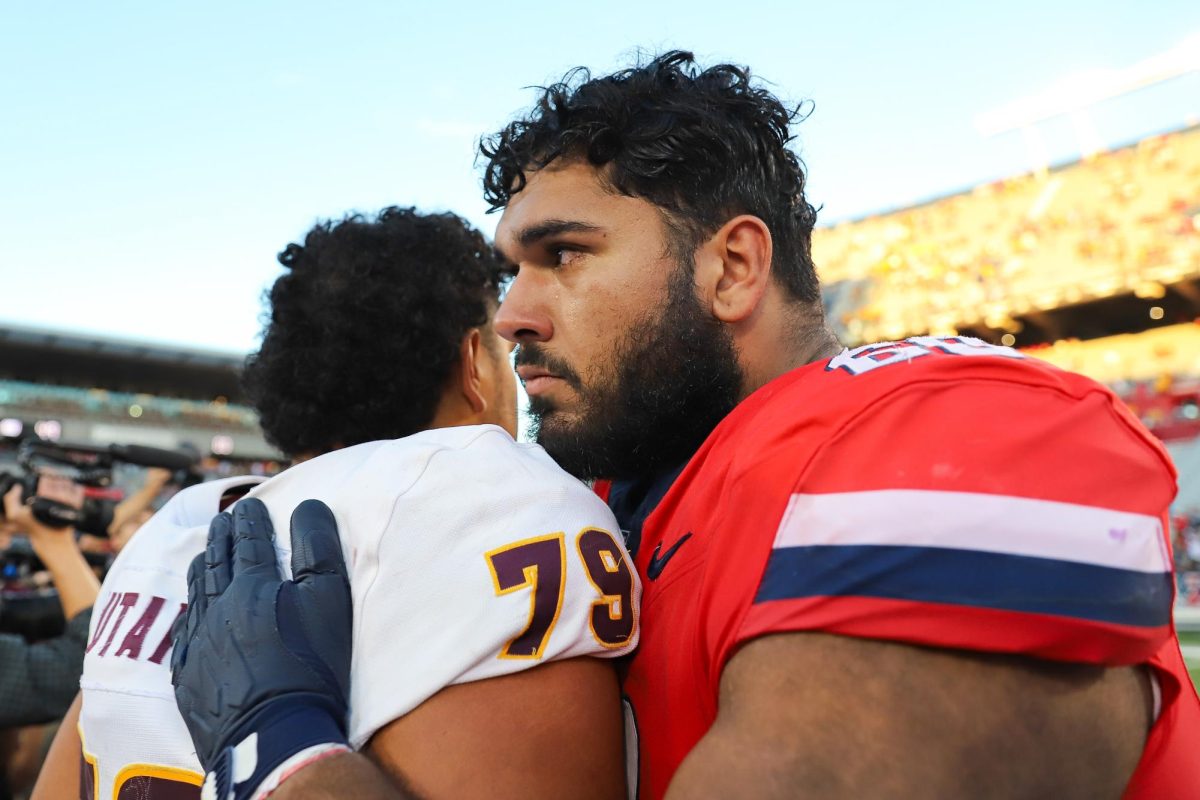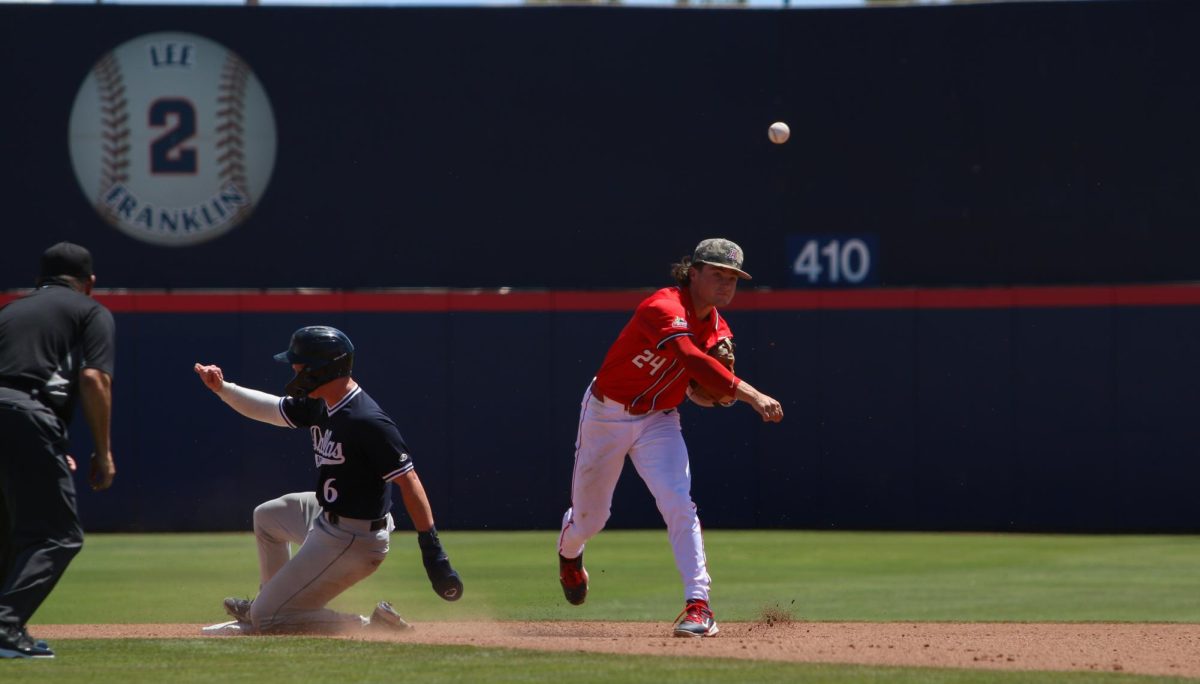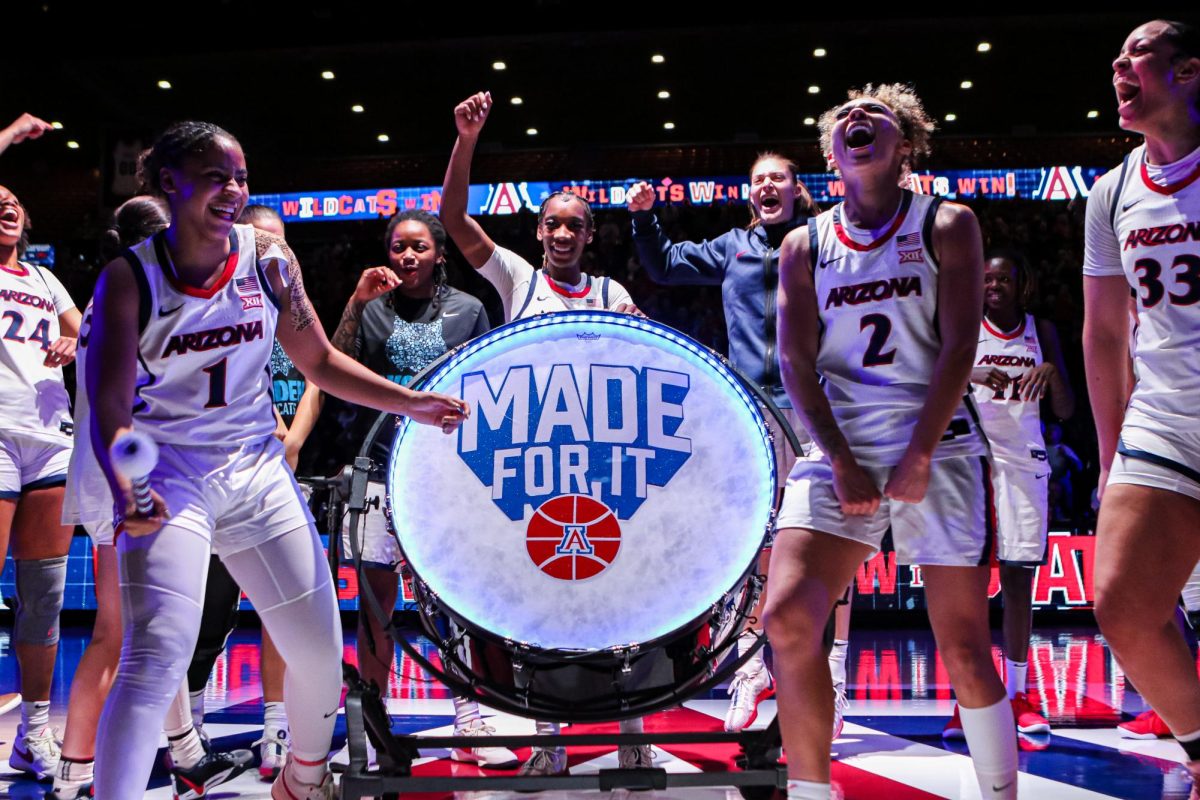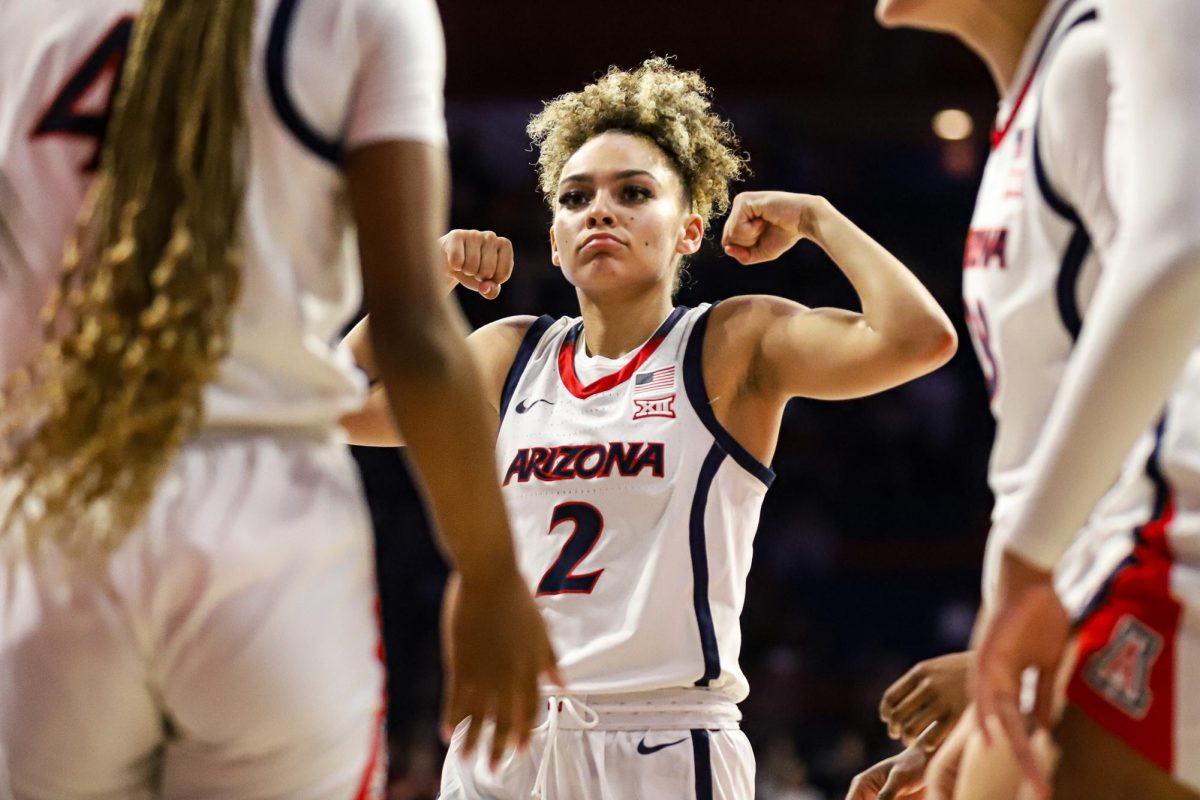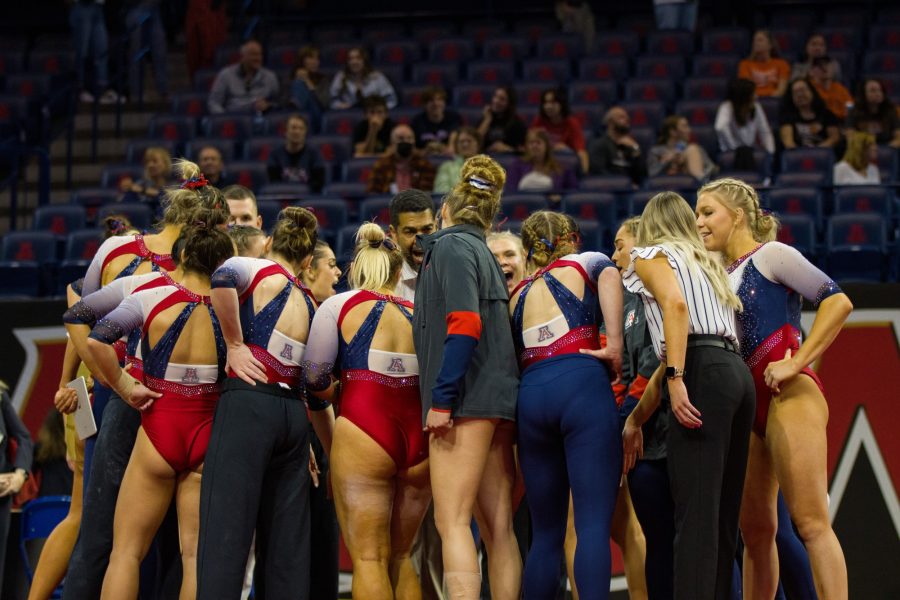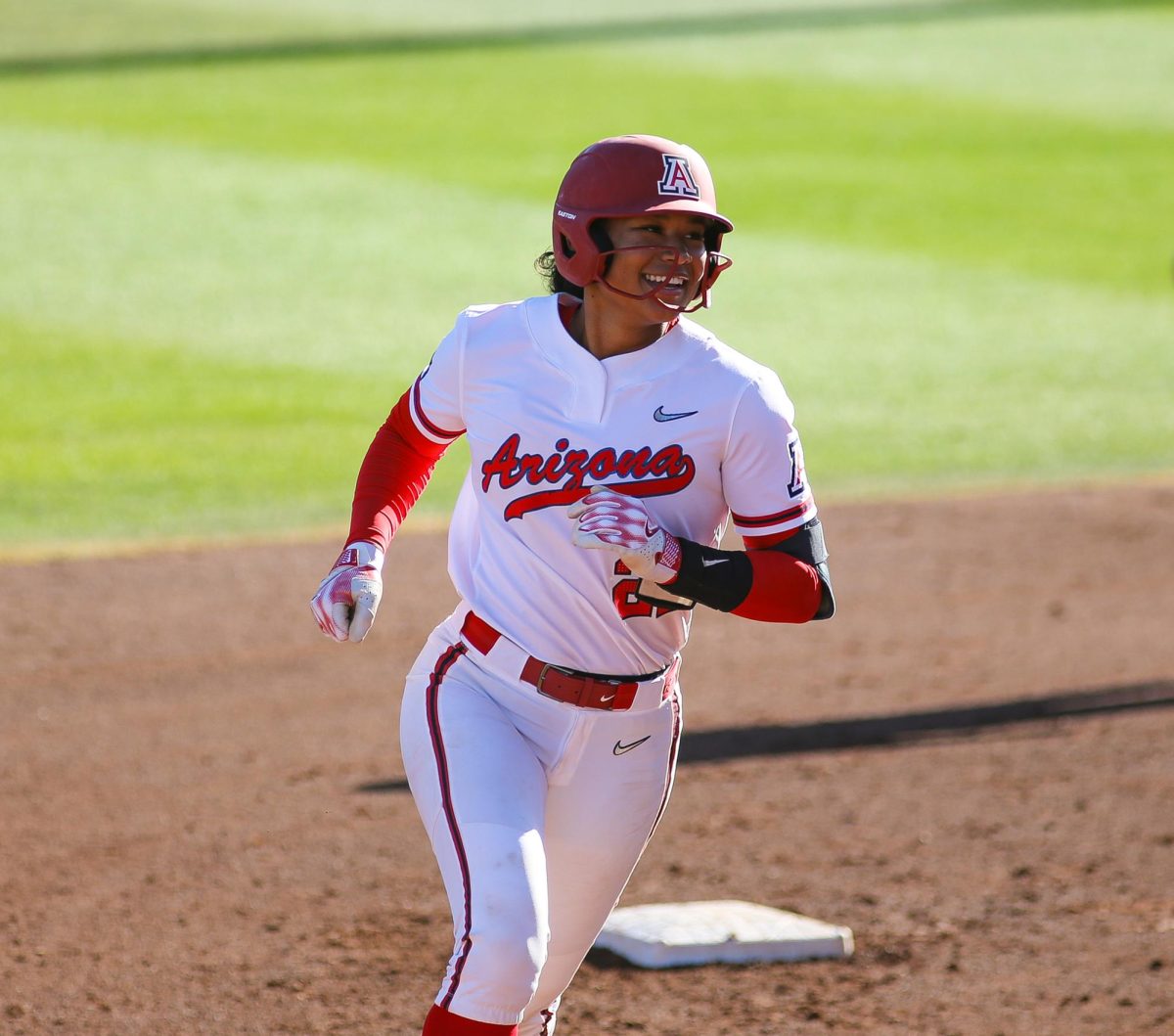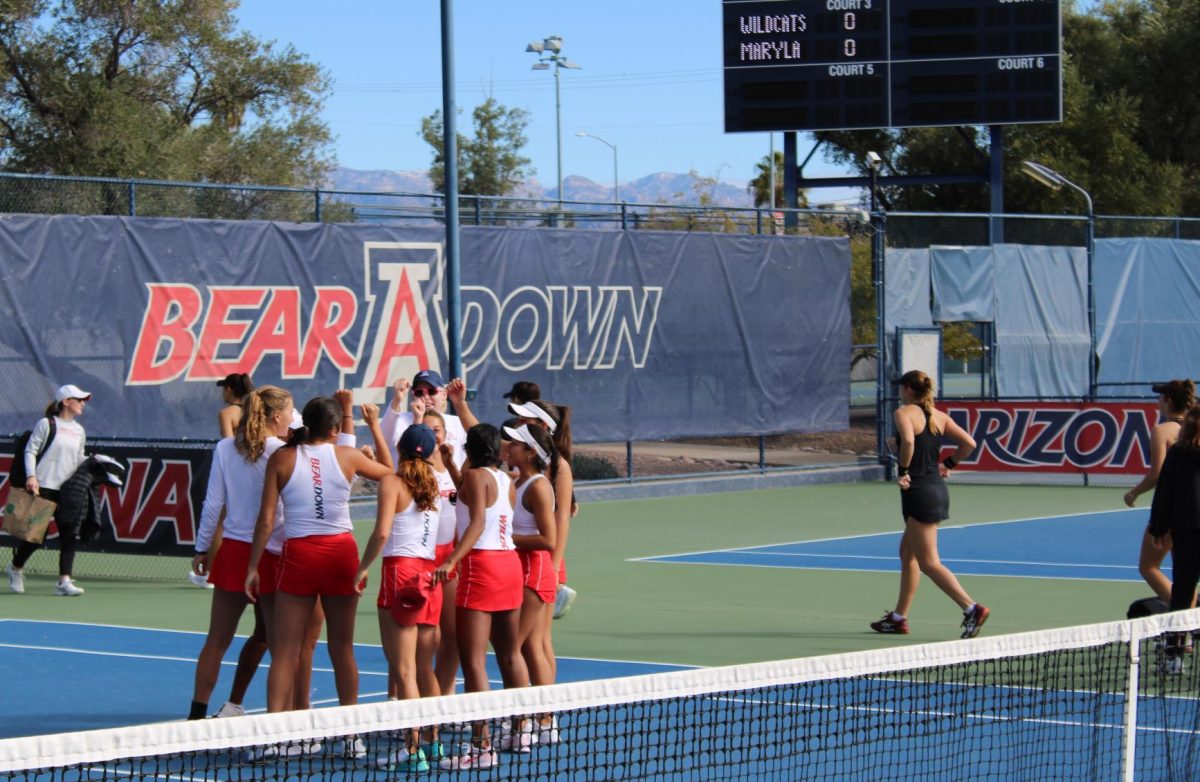In three of the past five years, Arizona has finished with a top 10 passing offense, but that was under former head coach Mike Stoops.
Under Rich Rodriguez, the Wildcats probably won’t have quite as prolific a passing game. However, don’t be surprised if the running game flourishes like never before, not only because of a renewed commitment to running the ball, but also because the depth and talent of the team’s backfield that has been absent in recent years.
“Our deepest unit is probably our running backs,” Rodriguez said. “We’re not real deep anywhere else.”
Rodriguez is no stranger to deep backfields. In his time at West Virginia, his offense produced a number of 1,000 yard rushers, including Steve Slaton, an All-American selection in 2005, and Noel Devine, who rushed for an average of 1,079 yards in four seasons with the Mountaineers.
UA running back coach Calvin Magee, who has coached running backs since 1997, West Virginia and Michigan with Rodriguez included, realized the importance of referencing former players in film study.
“I think it’s very important,” Magee said. “They need to know what we’re expecting and you can see it translate.”
It may be important to study players who have played in the same system, but film on just two runners isn’t going to cut it, at least for senior fullback Taimi Tutogi.
“We’ve been watching running backs from all over, from Walter Payton to Barry Sanders, just taking technique from them on how they see their reads and how their steps are taken,” Tutogi said. “We just apply that to our game, taking the right steps and making sure you read the defense slowly and make the right cuts.”
Although the depth of the running game took a hit with senior fullback Greg Nwoko switching positions to linebacker, Magee plans to rotate between as many as four backs in each game.
“I’ve always liked to have four guys ready to go,” Magee said. “At the pace we play and it’s such a long season, we don’t want to lose a step, so we rotate.”
In the rotation contending for serious playing time are Tutogi, juniors Daniel Jenkins and Kylan Butler, along with sophomore Ka’Deem Carey and freshman J.T. Washington, a smaller back who has surprised coaches and teammates with his speed.
“Just to know that people consider our running back room so deep, that’s a great accomplishment right now,” Butler said. “We take pride in that. We get in there and everybody wants to make a play, everybody wants to do their assignment. There’s no slack off from the ones to the threes.”
According to the preliminary depth chart, released on July 24 at Pac-12 Media Day in Los Angeles, Jenkins and Carey will have the chance to become Arizona’s Slaton-Devine running back model.
“To be in this offense you have to be in shape, you have to be fast and you have to be physical,” Carey said. “The coaches prepared us for this, and I think we’re ready. It gets everybody involved; everyone is out there flying.”
In the West Virginia offense, Slaton and Devine, along with quarterback Pat White, got most of the publicity. But Owen Schmitt was just as important to that team’s success, and Tutogi compares similary to Schmitt.
Tutogi, at 6-foot-1-inch and 260 pounds, doesn’t expect to do any hiding behind lineman waiting for a running lane to open, unlike his smaller teammates.
“With Ka’Deem and Daniel, they’re faster runners, more wiggle runners,” Tutogi said. “When I get the ball, you know what you’re going to get. You’re going to get a downhill runner and guys that don’t stop their feet. You can take the ball and just pound it and pound it.”
Washington, thus far the only one left out of the regular rotation, has progressed well so far, which is not only a testament to a new, running-friendly offense and an experienced offensive line, but also to his speed and versatility. Washington has twice led the team in rushing yards in scrimmages since fall camp began, and is expected to contribute on special teams.
“I’m going to go out there and do my role, no matter what the coaches ask me to do,” Washington said. “It’s going to work out for everybody.”







